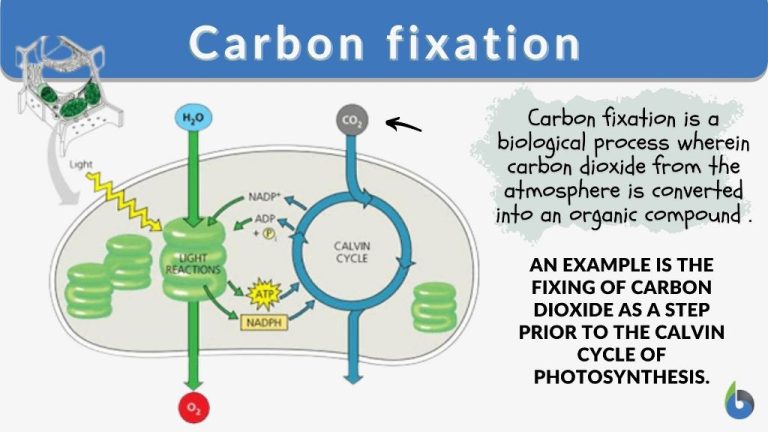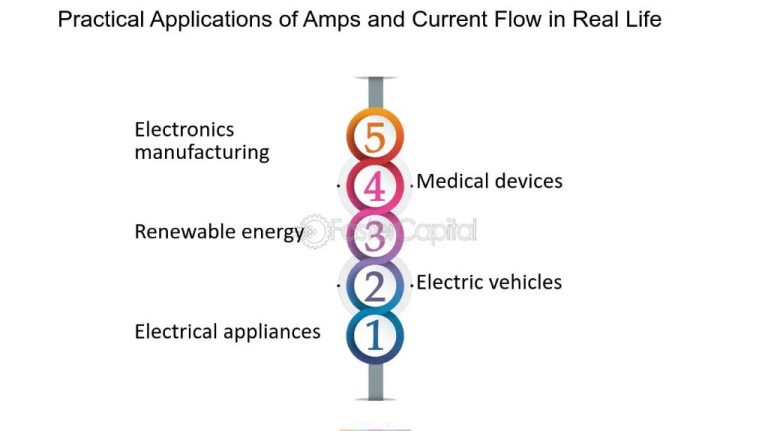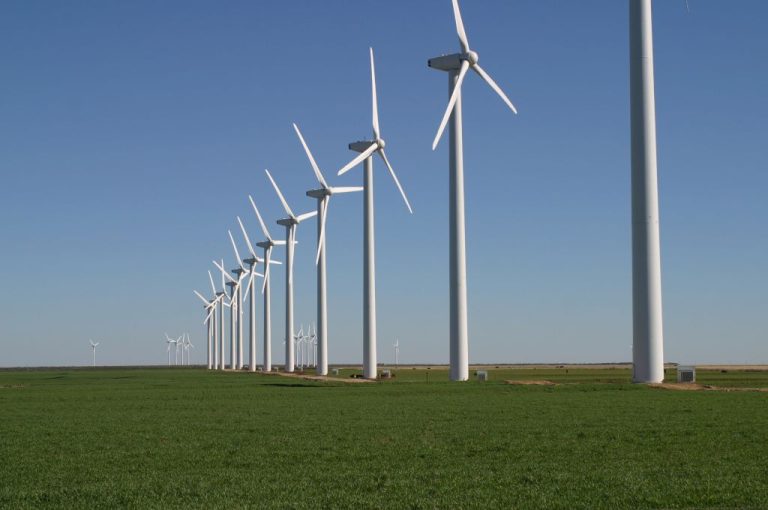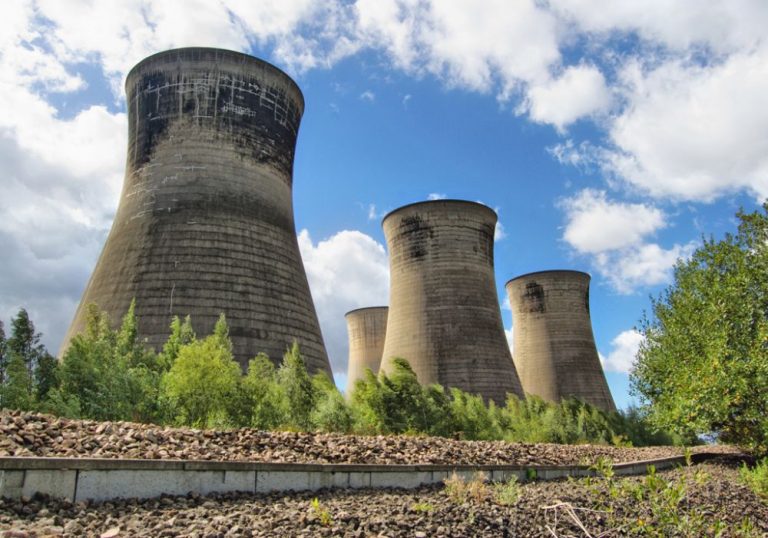What Is An Example Of Potential Energy In A System?
Potential energy is the stored energy an object has due to its position or configuration. Some common examples of potential energy include:
- Gravitational potential energy – the energy stored in an object due to gravity. For example, a book sitting on a table has gravitational potential energy.
- Elastic potential energy – the energy stored in elastic materials that are stretched or compressed. For example, a stretched rubber band has elastic potential energy.
- Chemical potential energy – the energy stored in the bonds of atoms and molecules. This energy gets released in chemical reactions.
Understanding potential energy is important in physics and engineering because it allows us to calculate the total mechanical energy in a system. Potential energy can be converted into kinetic energy, which is the energy of motion. A ball rolling down a hill converts its gravitational potential energy into kinetic energy. Without an understanding of potential energy, it would not be possible to accurately predict the motion and behavior of physical systems.
In everyday life, we witness potential energy conversions constantly. For example, the chemical potential energy stored in batteries gets converted into electricity to power devices. Food supplies the chemical potential energy for our bodies. Overall, potential energy is a fundamental concept underlying many natural and technological processes.
Gravitational Potential Energy
Gravitational potential energy is the energy possessed by an object due to its height above the ground. The higher the object is above the ground, the greater its gravitational potential energy. There is a direct relationship between an object’s height and its gravitational potential energy – as the height increases, so does the gravitational potential energy.
Some common examples of gravitational potential energy in everyday life include:
- Lifting objects – when you lift an object upwards, you increase its height and give it gravitational potential energy.
- Water held behind a dam – the water in a dam reservoir has gravitational potential energy that can be converted to electricity as it flows down through the dam.
- Objects placed on shelves or high cabinets – the higher up an object is placed, the more gravitational potential energy it possesses.
In each case, the object gains gravitational potential energy proportional to its increase in height. This energy can later be released as kinetic energy if the object falls.
Elastic Potential Energy
Elastic potential energy is the potential energy stored in elastic objects that are stretched or compressed. Some common examples of elastic potential energy include:
- Springs – When a spring is stretched or compressed, the coils are deformed. This deformation results in stored elastic potential energy. The further a spring is stretched or compressed, the more potential energy it has.
- Rubber bands – Stretching a rubber band deforms the molecular structure of the rubber polymer chains. When released, the deformation is undone and the rubber band returns to its original shape. The energy to return to the original shape comes from the stored elastic potential energy.
- Compressed gases – Compressing gas into a smaller volume squeezes the gas molecules closer together. This compression stores elastic potential energy in the gas. If released, the gas will expand again, releasing the stored energy.
In all of these examples, the elastic potential energy stored is proportional to the square of the deformation (stretch or compression) of the object. A greater deformation leads to more potential energy being stored.
Chemical Potential Energy
Chemical potential energy is the energy stored in the bonds between atoms and molecules. It is energy that can be released or absorbed during a chemical reaction. Some common examples of chemical potential energy include:
Batteries – The chemical reactions that take place in batteries involve the breaking and formation of chemical bonds, which releases energy. This allows batteries to store energy chemically for later use.
Food – The molecules that make up food store chemical potential energy that is released when the food is digested and metabolized by an organism. This provides the energy living things need to survive.
Fuel – Substances like gasoline, natural gas and propane contain a tremendous amount of chemical potential energy due to their molecular bonds. This energy is released in an engine to power vehicles, machinery, etc.
Explosives – Explosives like TNT contain chemical bonds that, when triggered, can break down extremely rapidly, releasing a huge amount of chemical potential energy at once in an explosive reaction.
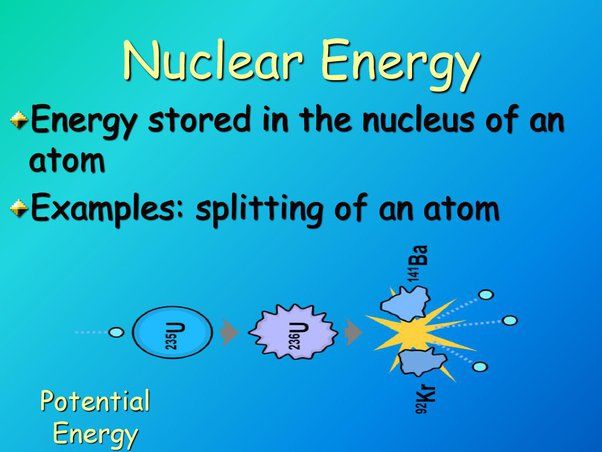
Nuclear Potential Energy
Nuclear potential energy refers to the energy stored within an atom’s nucleus. It arises from the nuclear forces that hold the protons and neutrons together within the nucleus. There are two main ways nuclear potential energy can be converted into other forms of energy: nuclear fission and nuclear fusion.
In nuclear fission, a heavy radioactive element like uranium or plutonium splits into two lighter nuclei, releasing neutrons, gamma rays, and energy in the process. Nuclear power plants use controlled nuclear fission reactions within nuclear reactors to generate electricity. The nuclear potential energy stored in uranium or plutonium fuel gets converted into thermal energy and kinetic energy, which is used to boil water into steam that drives turbines connected to electrical generators.
Nuclear fusion works in the opposite way – smaller nuclei are fused together to create larger nuclei, releasing energy. This is the process that powers the sun and other stars. Nuclear fusion requires tremendous pressure and temperature to overcome the strong nuclear force holding nuclei apart, but if achieved could provide an extremely efficient energy source. Scientists are researching ways to control nuclear fusion reactions for energy production, such as in experimental tokamak reactors.
Both nuclear fission and nuclear fusion reactions demonstrate the vast amounts of potential energy stored within the nuclei of atoms. This potential energy can be tapped and converted into other forms of energy through nuclear reactions.
Electric Potential Energy
Electric potential energy is the energy stored in electric fields. It refers to the energy that is stored in charged particles. The interactions between oppositely charged particles creates a potential for energy to be stored. There are several common examples of electric potential energy in everyday life:
Capacitors are devices that store electric charge. They consist of two conductors separated by an insulator. When capacitors are connected to a power source, an electric field is created between the two conducting plates, allowing energy to be stored. The amount of energy stored depends on the voltage applied and the capacitor’s capacitance.
Lightning forms through the build up of opposite electric charges between clouds and the ground. The large difference in electric potential between the clouds and ground allows massive amounts of electric potential energy to accumulate. When the build up becomes great enough, lightning discharges, releasing this energy rapidly.
Static electricity is a build up of electric charge on an object. This occurs when two surfaces contact and separate, causing electrons to be transferred from one surface to the other. The imbalance of charges between the surfaces creates an electric potential. This can give rise to sparks when the excess charge discharges rapidly to another object.
Magnetic Potential Energy
Magnetic potential energy is the energy stored in a magnetic field. This energy can be released to do work when there is a change in the magnetic field configuration.
A common example of magnetic potential energy is in a current-carrying wire. When an electric current flows through a wire, it generates a magnetic field around the wire. The strength of the magnetic field depends on the amount of current flowing. The magnetic field contains energy that can be tapped to induce current in another wire nearby through electromagnetic induction.
The most familiar example is a transformer, which consists of two coils of wire wound around an iron core. An alternating current in one coil (the primary winding) generates a changing magnetic field in the core, which induces a current in the other coil (the secondary winding). The magnetic potential energy is transferred from one coil to the other without direct wire connection between the coils.
Other applications that utilize magnetic potential energy include electric motors, generators, inductors, and magnetic levitation systems. The magnetic energy can be converted to kinetic energy to drive motion and do work.
Converting Potential to Kinetic Energy
One of the most important things to understand about potential energy is that it can be readily converted into kinetic energy. Kinetic energy is energy associated with motion. A simple example of converting potential to kinetic energy is a object held at a height being allowed to fall due to gravity.
As the object falls, its potential energy is converted to kinetic energy. The higher the starting position, the greater the potential energy, and thus the greater the kinetic energy as the object falls. This is why falling from greater heights results in faster speeds.
Another example is exploding chemicals. Many explosives contain unstable chemical bonds holding a tremendous amount of potential energy. When ignited, these chemical bonds break, converting the potential energy into kinetic energy in the form of rapidly expanding gas and heat.
Springs are another example. When a spring is compressed or stretched, it stores elastic potential energy. Releasing the spring converts this potential energy into kinetic energy as the spring returns to its normal shape.
Understanding the interconversion of potential and kinetic energy is key to analyzing mechanical systems and events in everyday life. Potential energy is stored waiting to be released, while kinetic energy is energy in action.
Potential Energy in Everyday Life
Potential energy is not just something we learn about in science class – it’s all around us in our daily lives. Here are some ways to recognize potential energy and apply the concepts:
When you hold an object like a book above the floor, it has gravitational potential energy that can be converted to kinetic energy if you drop it. The higher it is held, the more potential energy it has.
When you pull back on a slingshot, bend a bow, or compress a spring, you’re increasing the elastic potential energy that can propel the projectile forward later with kinetic energy.
Food, fuel, and batteries contain chemical potential energy from chemical bonds that can release energy through chemical reactions.
Uranium and other radioactive elements have nuclear potential energy from their unstable nuclei that can be converted to huge amounts of heat and kinetic energy through nuclear fission or fusion.
When you rub your feet across a carpet, you build up electric potential energy from separated positive and negative charges. Touching a doorknob releases that energy in a spark.
Magnets have magnetic potential energy that allows them to attract or repel each other. Lifting one magnet away from another increases this potential energy.
So keep an eye out for potential energy stored all around you! Try to recognize instances where energy is waiting to be released and converted into motion.
Conclusion
In summary, potential energy is the stored energy an object possesses due to its position, internal structure or composition. There are several main types of potential energy that are important to understand, including gravitational, elastic, chemical, nuclear, electric and magnetic potential energy. This stored energy has the potential to be converted into kinetic energy, which is the energy of motion.
Gaining a strong understanding of potential energy is crucial, as it allows us to predict and describe many physical phenomena and processes. Potential energy plays a role in everything from chemical reactions to the operation of simple machines and motors. It is a key concept across many scientific disciplines including physics, chemistry and engineering. By learning about the different forms potential energy can take, and how it converts to kinetic energy, we gain great insight into the natural world.

